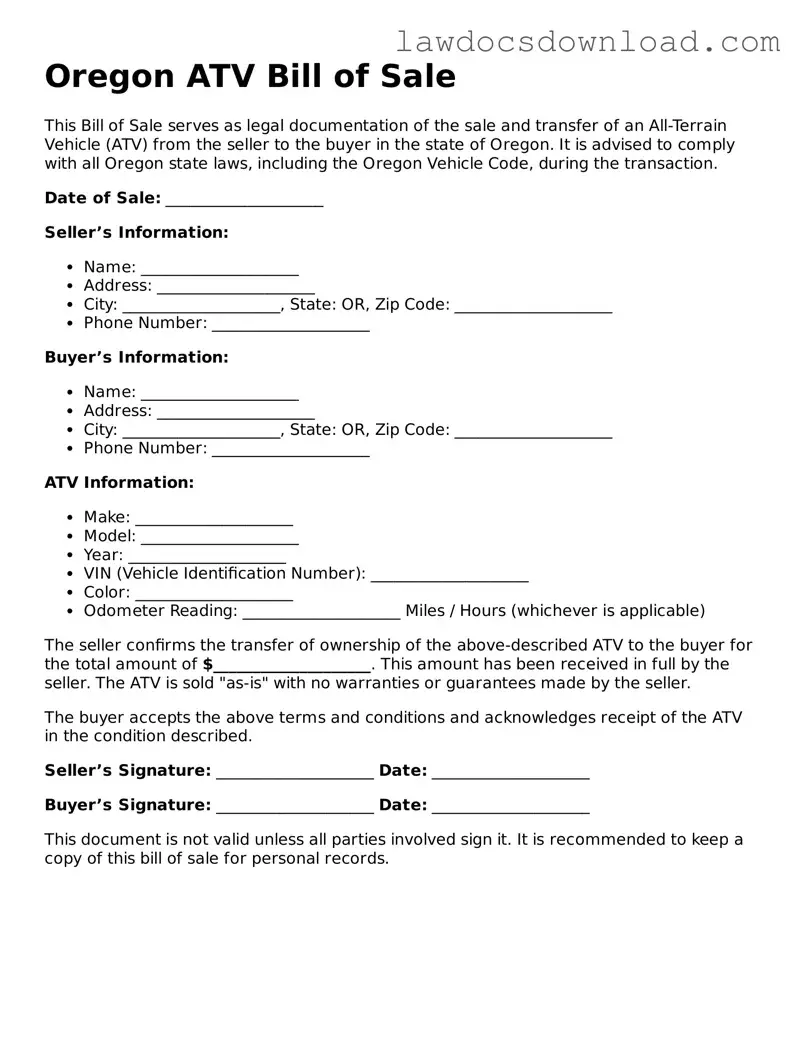The Oregon ATV Bill of Sale form shares similarities with the Vehicle Bill of Sale form used for automobiles. Both documents serve as legal proof of sale and purchase between a buyer and a seller. In each, critical information such as the make, model, year, and identification number of the vehicle or ATV, along with the sale price, date of transaction, and the names and signatures of the involved parties, are recorded. These forms protect both parties if any disputes or legal issues arise post-sale.
Like the Oregon ATV Bill of Sale, the Boat Bill of Sale form is essential for the legal transfer of ownership of a boat. This document outlines the transaction details, including the boat's description, the purchase price, and the parties' details. It plays a crucial role in registering the boat in the new owner's name and may be required for insurance purposes. Both bills of sale provide a formal record that establishes the new owner's legal rights to the property.
Another similar document is the Livestock Bill of Sale, which is used during the sale of animals such as cows, pigs, horses, and other livestock. It functions like the ATV Bill of Sale by documenting the sale's specifics, including the animal's description, price, and the buyer and seller's details. This form ensures that the sale is recognized formally, transferring ownership and responsibility of the animal from the seller to the buyer.
The Firearms Bill of Sale form is also akin to the Oregon ATV Bill of Sale. It documents the sale and transfer of ownership of a firearm from a seller to a buyer. Details such as the make, model, caliber, and serial number of the firearm, alongside the sale price and the parties' identities, are captured. This form is important for personal record-keeping and might be required by law in some jurisdictions to ensure legal ownership and transfer of firearms.
Comparable to the Oregon ATV Bill of Sale is the Business Bill of Sale, which is used to document the sale of a business. It details the transaction, including the business's name, assets being sold, the sale amount, and the parties' information. Although the nature of the sale is more complex, involving various assets, this form provides a legal record of the ownership transfer from the seller to the buyer, similar to the function of the ATV Bill of Sale.
Lastly, the Equipment Bill of Sale form parallels the Oregon ATV Bill of Sale when documenting transactions involving machinery or heavy equipment. It records pertinent details such as the equipment's description, serial number, purchase price, and the parties involved. This form is crucial for the legal transfer of ownership, ensuring that both buyer and seller have a record of the transaction, thereby protecting their legal rights and interests.
